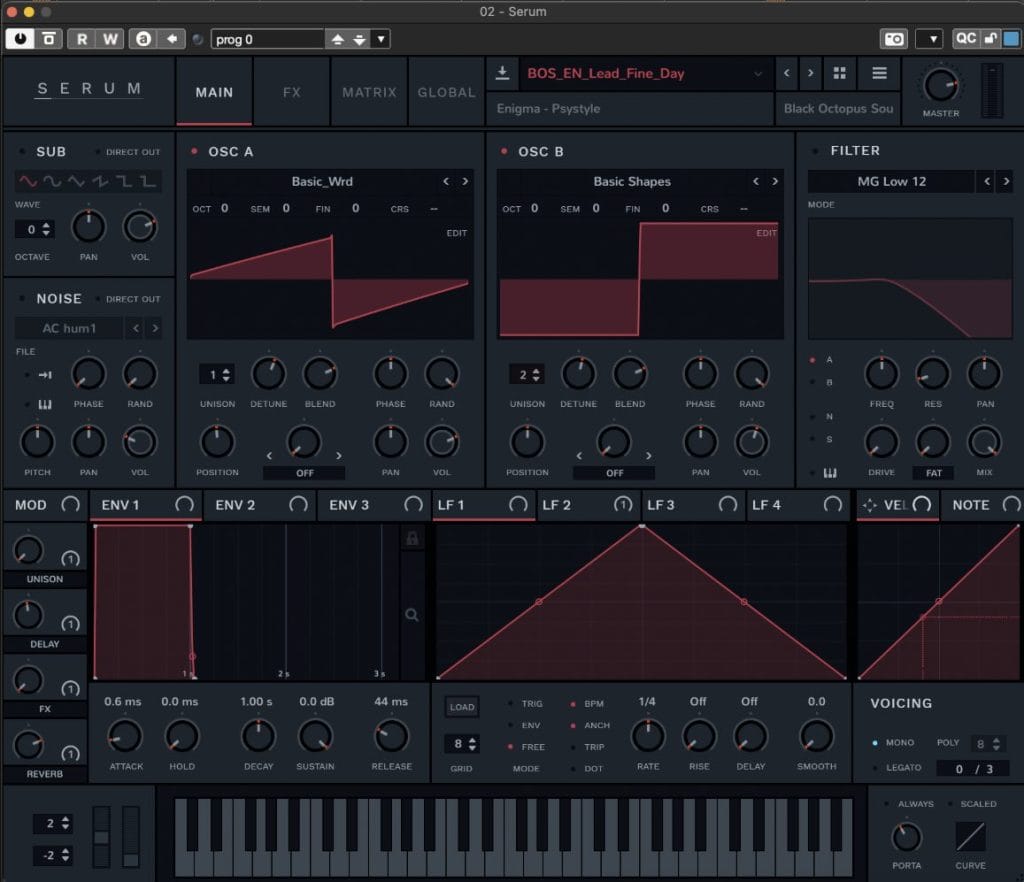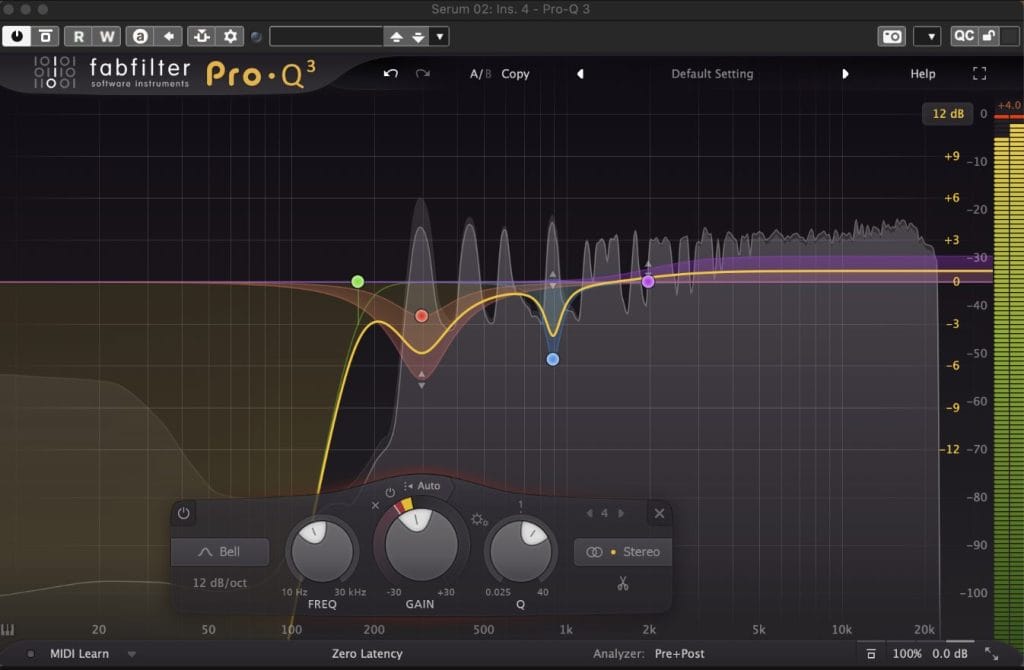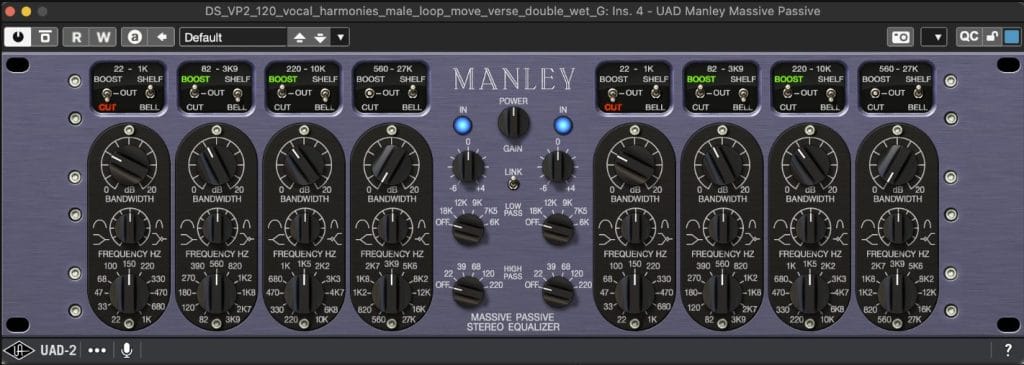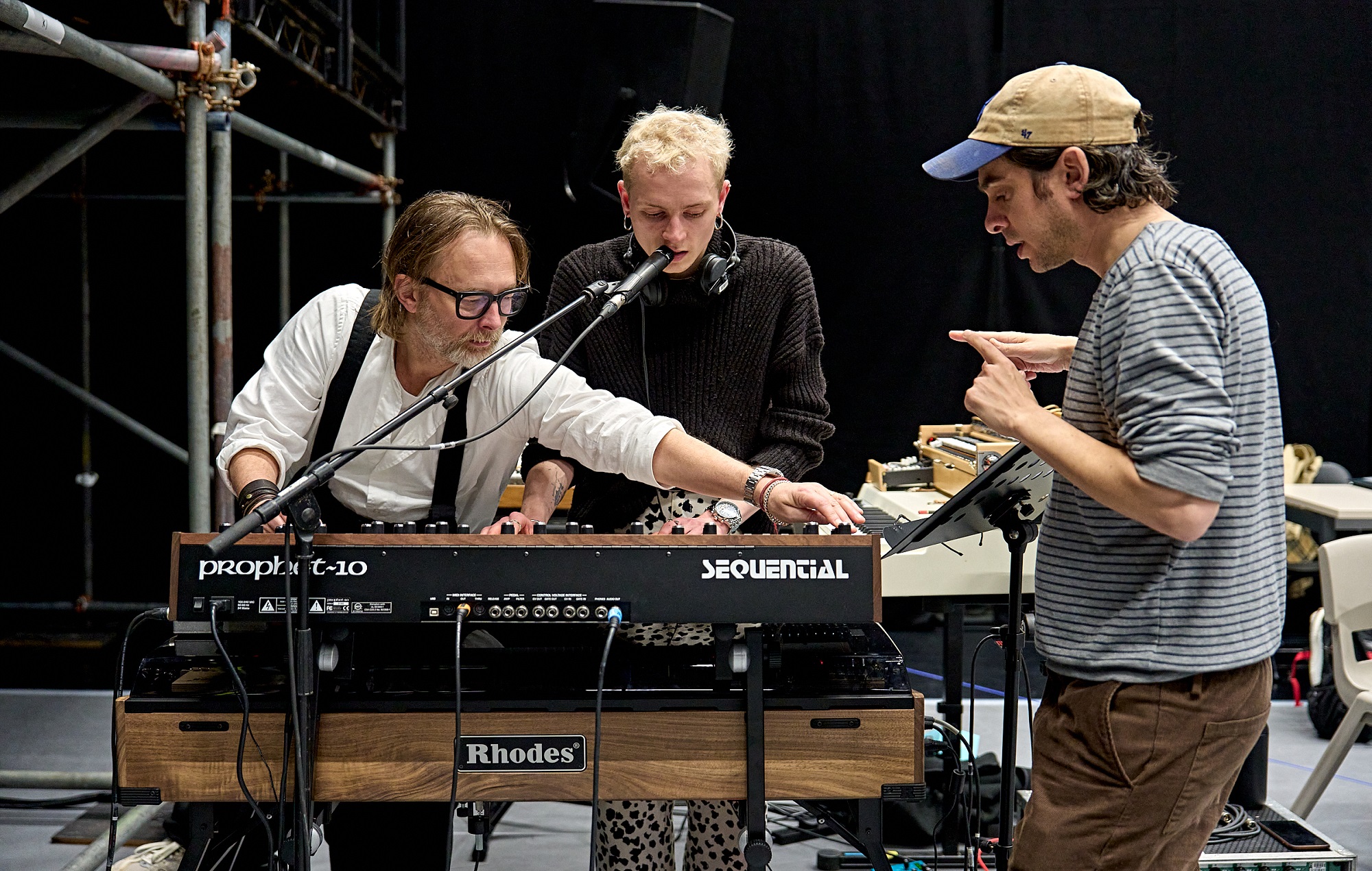Alignment’s Mystical Energy EP marks his seventh release on Charlotte de Witte’s KNTXT imprint, and by this point, it’s clear why he’s a mainstay. The record is fast, focused, and rooted in a hybrid of hard techno and 90s trance that’s become central to his sound. The title track combines whispered vocal elements, saturated synth leads, and clean percussion programming that cuts through with precision. Elsewhere on the EP, he blends distorted psy textures with Brazilian vocals, metallic synths with trance-era crescendos, and wide, hoover-like leads that bring tension without muddying the mix.
Every track moves fast, but the layers are managed in a way that avoids harshness or clutter. That kind of mix clarity doesn’t happen by accident. In the breakdown below, Alignment walks through the core plugins and decisions that shaped “Mystical Energy,” from the layered Serum patch that drives the main melody to how he EQs and glues everything together in the mastering chain.
What stands out is the workflow — nothing overly complicated, no gimmicks, just consistent techniques applied with intent. Whether it’s using FabFilter’s Pro-Q 3 for subtle cleanup or shaping the final mix with a Massive Passive for added width and warmth, the tools serve the track, not the other way around. If you’re working in similar tempos or styles, this breakdown has a lot to take from.

Serum

Serum is a wavetable synth that lets you craft complex sounds from customizable waveforms. It has an intuitive interface, high-quality sound, and a flexible modulation system that makes sound design feel seamless.
For the main synth in the track, I started from a ‘90s-style preset and tweaked it slightly. I layered it with another synth playing the same melody, sitting more in the background to add extra dimension. The approach was simple: layering sounds to create a fuller and more polished result.
I recommend Serum because it’s versatile and sounds great.
If you’re just starting out, there are tons of presets and YouTube tutorials that make it easy to get going. You really don’t need dozens of synths — this one can handle most of what you’ll need.
FabFilter Pro-Q 3

FabFilter’s EQ is one of those tools that ends up on nearly every track. It’s intuitive, precise, and fast, whether you’re cleaning up problem frequencies or shaping a sound to give it more character.
I used Pro-Q 3 across the mix — trimming excess frequencies from the synths, drums, and kick. Small EQ moves helped create more separation in the mix and a smoother, clearer overall sound.
If you’re working in hard techno, I’d recommend leaning into the dynamic mode. It’s incredibly useful for taming harsh resonances without dulling the mix. I also automate EQ curves on elements like the bass or kick to evolve over time. The solo band function is a lifesaver when you need to make detailed adjustments.
One piece of advice: don’t overdo it — smooth curves usually sound better than drastic cuts.
Manley Massive Passive (UAD Version)

The Massive Passive is a tube-based EQ known for its musicality and smooth character. The plugin version, especially from UAD, captures a lot of the depth and analog color of the original hardware. It’s not a surgical EQ — it’s a broad-strokes tool that helps shape the mix in a very natural way.
I used it on the master to reinforce the low-end around 68 Hz and add air at 16 kHz. The goal wasn’t to change the sound dramatically but to “glue” it together and bring out a bit more warmth and depth, especially in the hi-hats and metallic layers.
My advice is to use it subtly. Even 1 or 2 dB boosts can shift the character of a mix. It also works great on drum buses — adding roundness and cohesion without losing punch. One trick I use often is to follow precise digital EQ with the Massive Passive, giving the track a more musical finish.
Quick Fire Tips For Making Hard Techno:
#1 – One trick for producing this kind of music is layering, especially when it comes to the kick.
For example, you can have a clean kick and layer it with a distorted kick where you remove all the low frequencies, using it just for extra texture.
This helps you get a sound that feels dirty and powerful, but actually stays clean and non-intrusive in the mix.
Same goes for the rumble — having a clean sub is important, but sometimes it can sound a bit empty. If you layer it with a heavily distorted and saturated sub (but with no low end), you’ll get a much richer and more complex sound that still comes through clean.
#2 – My advice when starting a track is to focus right away on the break and the drop.
Once you’ve got a solid melody and maybe a vocal that fits well, building the rest around it becomes way easier.
The middle part of the track is the most important compared to the intro and the ending, so it makes sense to start there. Lock in the core of the track first, then work on shaping the beginning and the end.
#3 – Try to develop your own sound.
When you’re just starting out, it’s totally normal — and actually really helpful — to copy the artists you love. It helps you understand how they work and how they structure their tracks. But over time, it’s important to start moving away from those references and find something more personal.
If you stay dedicated, it’s a process that happens naturally anyway.
The post How it’s made: Alignment – Mystical Energy (KNTXT) appeared first on Magnetic Magazine.




